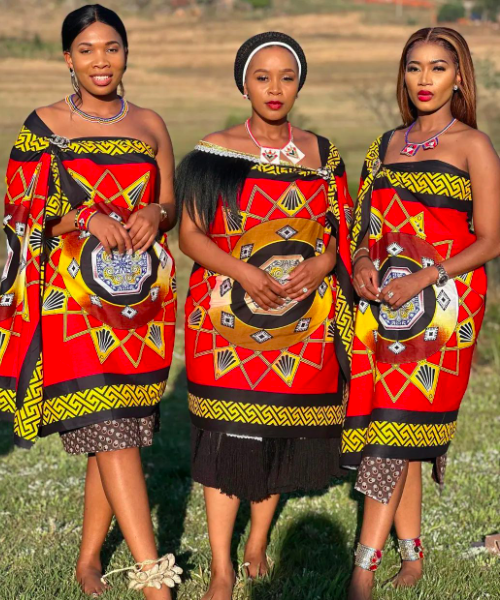Swazi Culture

The style of life and traditions of the Swazi people across numerous historical periods make up their culture. The Swazi people have a rich cultural heritage that includes, among other things, music, food, religion, architecture, and kinship. [1] The Swazi people are made up of many Nguni clans that speak siSwati, a Nguni language. Most of these individuals live in South Africa and Eswatini. Currently, Eswatinians may also be considered Swazi people.The ancient political structure of the country and the family is one of the most obvious aspects of cultural identity in Eswatini. Together with the Ndlovukati (the "She-Elephant," or Queen Mother), who serves as the country's spiritual leader, the Ngwenyama (the "Lion," or King) is regarded as the head of the country at the national level. Events showcasing national culture frequently feature the Ngwenyama or Ndlovukati. The patriarch of the family is the head at home and has frequently engaged in polygamy in the past. This headman, who is frequently referred to as umnumzane, is at the center of all household operations. A chiefdom, also known as an umphakatsi, is made up of a community of houses and the land they are situated on.An inkhundla is made up of several chiefdoms and is then a part of the country's regional division. This establishes a link between more contemporary forms of government and older conventional leadership structures. The royal mansions of the Ngwenyama and Ndlovukati host national cultural events including umhlanga, emaganu, and incwala. At the chief's home, also known as emphakatsini, local traditional events known as imiphakatsi are held. Weddings, funerals, and religious ceremonies are frequently held at family houses, and guests from the neighborhood are frequently welcomed.
The yearly Umhlanga Reed Dance is the most well-known cultural occasion in Eswatini. Girls cut reeds during the eight-day event, gave them to the Queen Mother, and then danced. (There is no official contest.) In late August or early September, it is completed. Only childless, single girls are eligible to participate. The ceremony's objectives are to protect girls' virginity, perform labor of homage for the Queen Mother, and promote teamwork and cooperation. A commoner maiden is chosen by the royal family to serve as the "induna" (captain) of the girls, and she broadcasts the ceremony's dates over the radio. She will be a skilled dancer who is also familiar with royal protocol. Her counterpart will be a daughter of the King. Today's Reed Dancing is a modernization of the traditional "umchwasho" practice rather than an ancient rite. All young girls in "umchwasho" were assigned to a female age group. The household of every girl who fell pregnant before marriage had to pay the local chief a fine of one cow. The girls would perform labor for the Queen Mother after a period of time, when they had reached marriageable age, culminating in dancing and feasting. The "umchwasho" chastity rite was in effect throughout the nation.
Swazi art includes a wide range of items, such as jewelry and ceramics. Beads have historically been used to create jewelry and apparel by the Swazi people. Ligcebesha, a vibrant necklace, and indlamu, a vibrant skirt for females, are two examples of this. [2] Most of the historical pottery in Eswatini consists of clay pots that are used for drinking, boiling beer, and decorating. The name of these clay pots is tindziwo. As tools, wooden sculptures were also quite popular, such as the umcwembe used to serve meat. Swazis also produced a large number of products using unique grasses. Emacansi and tihlantsi grass mats are among them. Brooms and baskets are some more objects made of grass.Eswatini is renowned for having a significant presence in the handicrafts sector. Some 2,500 people are employed by Eswatini's formalized handcraft companies, many of whom are women (per TechnoServe Swaziland Handcrafts Impact Study," February 2011). The products are unique and reflect the culture of Eswatini, ranging from kitchenware, to creative decorations, to complicated glass, stone, or wood artwork.

Beautiful information baby hope more people read this .
ReplyDeleteLove this 🔥
ReplyDeleteKeep em coming
You should talk more about these different cultures... I'm learning much and your information is good, you're good
ReplyDeleteSo beautiful my darling
ReplyDeleteSwaziland 🇸🇿 what a country 🙏
ReplyDelete🔥❤️that’s my culture Yooh , it’s giving neh
ReplyDelete